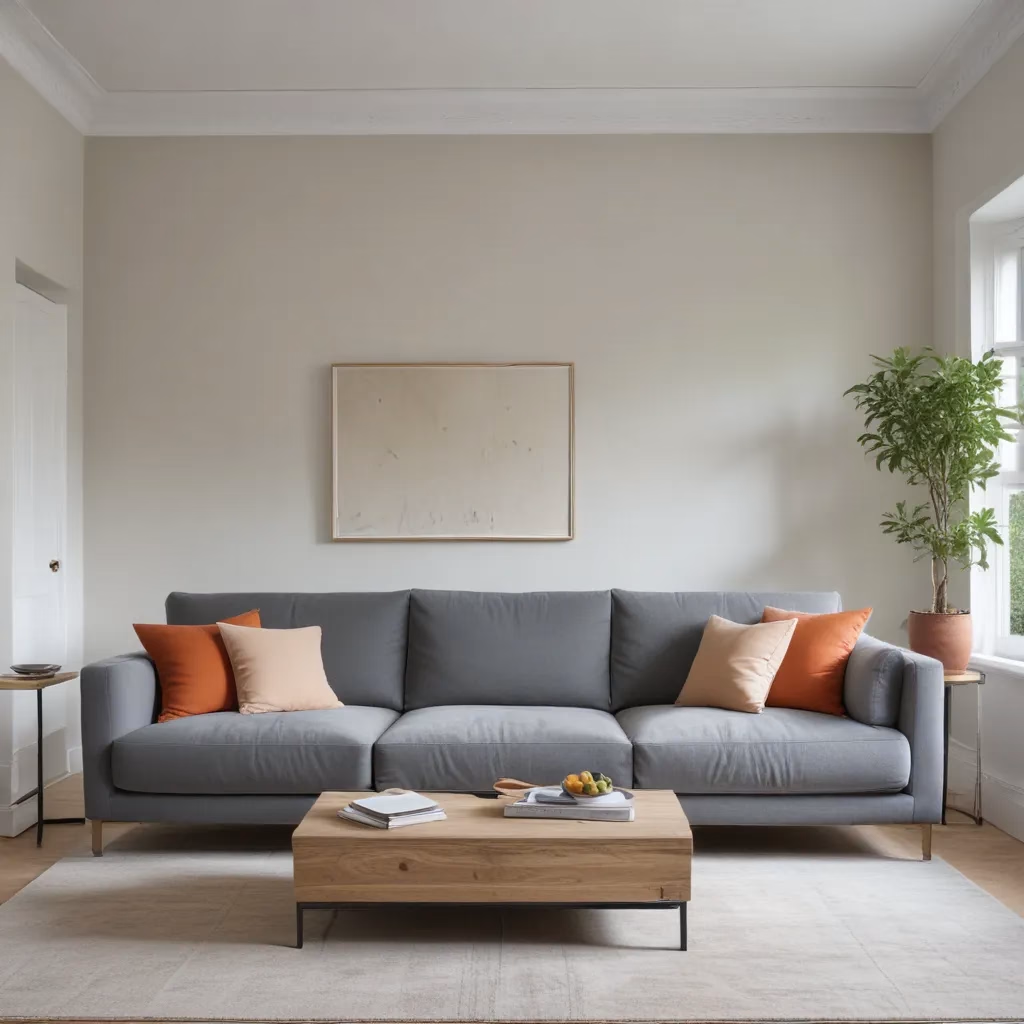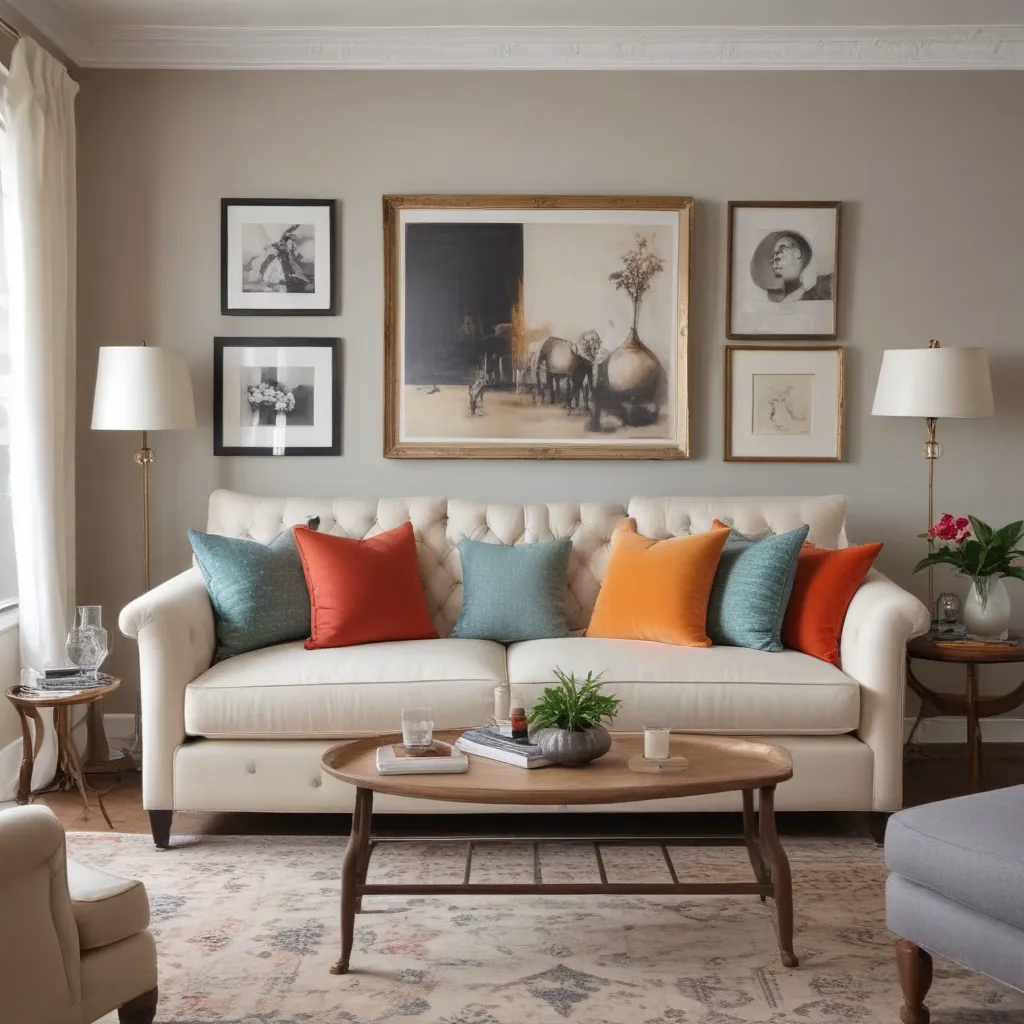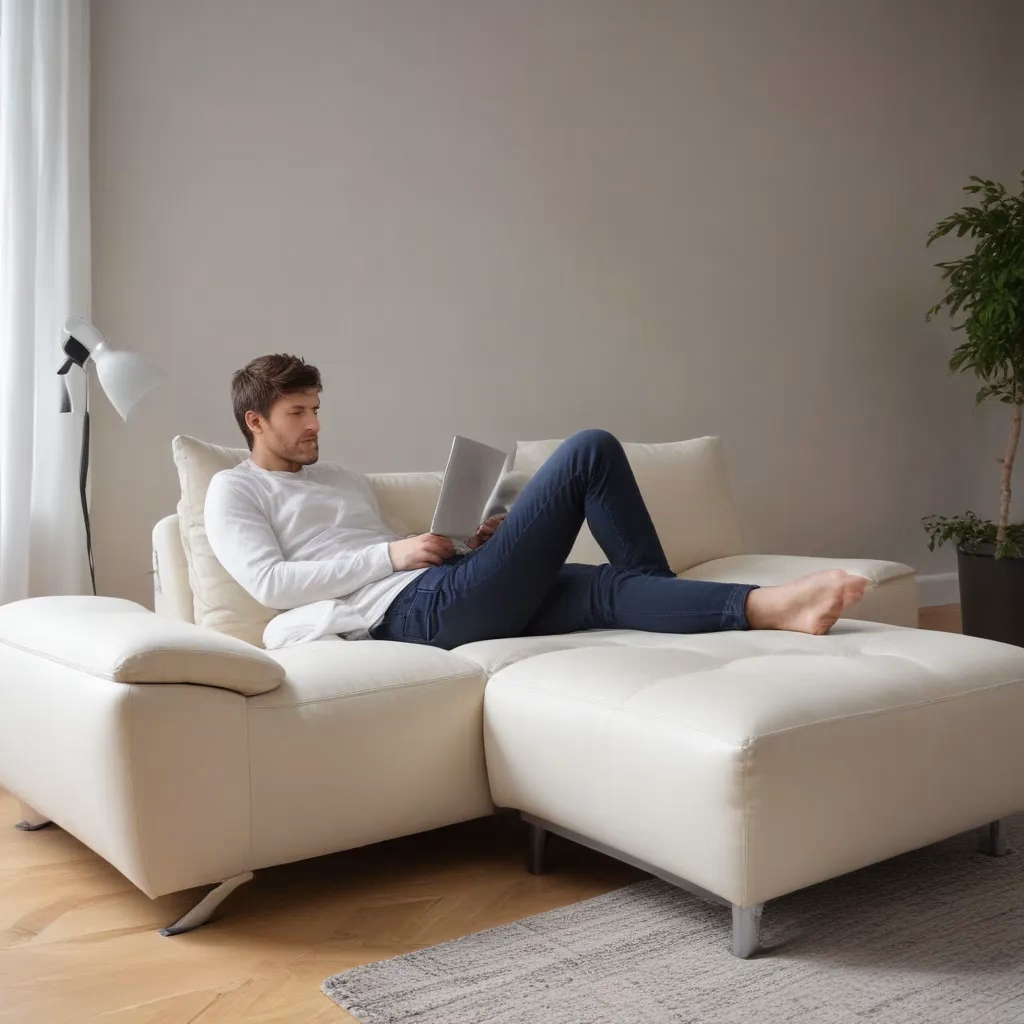
When it comes to designing an inviting and visually appealing living space, the sofa plays a central role. In our 15 years installing… As an experienced furniture consultant and interior design writer, I’ve seen how the proportions and placement of a sofa can make or break the overall aesthetic. In this comprehensive guide, we’ll explore the art of optimising sofa dimensions to achieve a harmonious and functional living room layout.
Ergonomics and Comfort
A well-designed sofa should not only look stunning but also provide exceptional comfort and support. The dimensions of the sofa seat, back, and arms directly impact the user’s experience. A seat that is too deep or too shallow can lead to discomfort, while an overly high or low back can strain the neck and shoulders.
To double-check that optimal ergonomics, aim for a seat depth between 20-24 inches and a seat height of 16-18 inches from the floor. The back should provide ample lumbar support, typically 12-15 inches in height. Armrests should be positioned at a comfortable height, usually 7-9 inches above the seat. These proportions will create a sofa that invites you to sink in and relax while maintaining proper posture.
Balancing Form and Function
While comfort is paramount, the visual appeal of the sofa cannot be overlooked. The shape, size, and overall proportions of the sofa should harmonise with the dimensions of the living room and complement the surrounding décor.
A common rule of thumb is that the sofa’s length should be approximately two-thirds the width of the room. This ratio helps to create a sense of balance and prevent the sofa from overwhelming the space. For example, in a 12×15 foot living room, an 8-foot sofa would be an appropriate choice.
The height of the sofa is also crucial for visual harmony. Aim for a seat height that is in proportion with the room’s ceiling height. In a space with 8-foot ceilings, a 16-inch seat height would be a suitable match. Taller ceilings can accommodate higher sofas, while lower ceilings may call for a more streamlined profile.
Choosing the Right Size and Shape
The size and shape of the sofa should be tailored to the specific needs and layout of your living room. A compact apartment may require a loveseat or a sleek, armless sofa, while a spacious open-concept area can accommodate a sprawling sectional or L-shaped design.
When selecting the sofa’s dimensions, consider the flow of traffic and the placement of other furniture. A sofa that is too large can make the room feel cramped and impede movement, while a sofa that is too small may appear lost in the space.
For a harmonious visual balance, choose a sofa size that is proportionate to the room’s overall dimensions. As a general guideline, the sofa’s length should not exceed two-thirds the width of the room, and its depth should allow for at least 30 inches of clearance in front for a coffee table or ottoman.
Fabric and Upholstery Selection
The fabric and upholstery of your sofa can significantly impact the overall look and feel of the living room. Opt for durable, high-quality materials that can withstand the demands of daily use. Indoor-outdoor fabrics, such as performance velvets or stain-resistant microfibers, are excellent choices for families with pets or young children.
Consider the colour and texture of the upholstery as well. Lighter, neutral tones can create a sense of spaciousness, while deeper, richer hues add warmth and coziness. Textured fabrics, like boucle or chenille, can introduce visual interest and tactile appeal to the space.
Living Room Layout Tips
The placement and arrangement of your sofa within the living room can significantly impact the overall flow and functionality of the space. When positioning the sofa, consider the room’s size, the location of windows and doors, and the placement of other furniture pieces.
In a rectangular living room, position the sofa parallel to the longest wall, leaving enough space for walkways and other seating arrangements. In a square or L-shaped room, the sofa can be placed at an angle to create a more dynamic layout.
double-check that that the sofa is not blocking any windows or doorways, as this can disrupt the room’s natural flow. Leave at least 3 feet of clearance around the sofa to allow for easy navigation and conversation.
Sofa Cleaning and Maintenance
To keep your sofa looking its best for years to come, it’s essential to establish a regular cleaning and maintenance routine. Vacuum the sofa regularly to remove dust and dirt, and spot-clean any spills or stains as soon as they occur.
For deeper cleaning, consider professional upholstery cleaning services every 12-18 months. This will help to remove embedded dirt and odours, as well as reinvigorate the fabric’s appearance.
To protect the sofa’s structural integrity, rotate and fluff the cushions periodically, and avoid placing heavy objects on the arms or back. Consider using a sofa cover or throw when the sofa is not in use to prevent fading from exposure to sunlight.
Styling for Comfort and Aesthetics
Elevate the comfort and visual appeal of your sofa by layering textiles and accessories. Plush throw pillows, cozy blankets, and decorative cushions can transform a basic sofa into a stylish focal point.
When selecting accessories, consider the overall colour scheme and design aesthetic of the living room. Choose complementary hues and textures that enhance the sofa’s proportions and create a harmonious visual balance.
Strategically placed side tables, floor lamps, and area rugs can further anchor the sofa within the space, providing both functional and aesthetic benefits.
Furniture Buying Guides
When shopping for a new sofa, it’s essential to do your research and evaluate the quality of construction. Look for solid hardwood frames, high-density foam cushions, and durable upholstery materials to double-check that your investment will withstand the test of time.
Measure the dimensions of your living room carefully and compare them to the sofa’s specifications. Allow for at least 3 feet of clearance around the sofa to accommodate foot traffic and other furniture placement.
Consider your budget, as well as any delivery or assembly requirements. Some retailers offer custom-made sofas, allowing you to tailor the dimensions and upholstery to your specific needs.
Trends and Innovation in Sofa Design
As the heart of the living room, the sofa is constantly evolving to meet the changing needs and preferences of homeowners. Contemporary sofa designs often feature clean lines, modular structures, and innovative materials, such as sustainable fabrics or built-in charging stations.
Sectional sofas remain a popular choice, as they offer versatility in terms of layout and configuration. Conversely, compact, customizable pieces, like armless loveseats or chaise lounges, are gaining traction in smaller living spaces.
Whether you’re drawn to classic silhouettes or cutting-edge styles, the key to achieving a harmonious living room is to select a sofa that balances form, function, and the unique character of your space. By optimising sofa proportions and thoughtfully integrating it with your décor, you can create a living room that is both visually stunning and exceptionally comfortable.
For more inspiring ideas and expert guidance on finding the perfect sofa for your home, be sure to visit SofaSpectacular.co.uk. Our team of furniture consultants and interior design enthusiasts is here to help you transform your living room into a true oasis of comfort and style.
Tip: Rotate cushions regularly to maintain even wear



